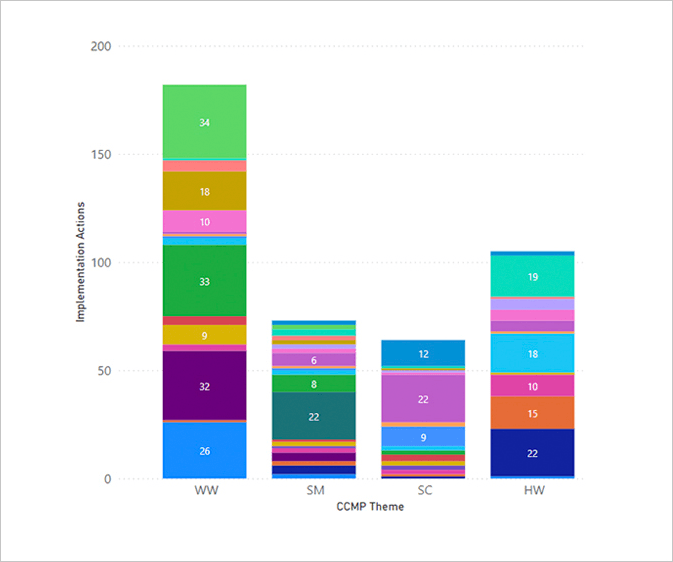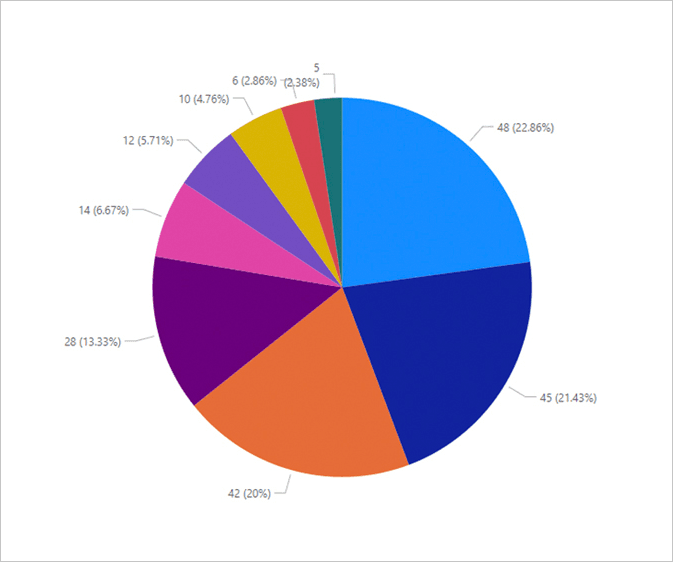Projects to Support the Management Plan
Interactive Projects Table
The interactive table below shows each LISS-funded project. More information about the project is available by clicking on the “More Details” button (see “Interactive Project Table Field Descriptions” at the bottom of this web page for a description of each provided field). The table reports on projects implementing the 2020-2024 CCMP – in other words, work conducted from 2020 and beyond to effectively capture program implementation related to the current LISS CCMP. The projects are linked to implementation actions to emphasize the relationship between program implementation and ecosystem health. It is critical for the program to not only communicate with the public the status of the Long Island Sound, but also to be transparent about existing efforts to improve ecological and human health.
Background
The Long Island Sound Study (LISS), established in 1985 under Section 320 and 119 of the Clean Water Act, is one of the inaugural EPA National Estuary Programs. EPA, joined with Connecticut and New York, established the LISS Management Conference – a partnership of federal and state agencies, user groups, concerned organizations, and individuals dedicated to improving the health of the Sound. First developed in 1994, the LISS issued a revised Comprehensive Conservation and Management Plan (CCMP) in 2015. The plan is organized around four major themes: 1) Clean Waters and Healthy Watersheds (WW); 2) Thriving Habitats and Abundant Wildlife (HW); 3) Sustainable and Resilient Communities (SC); and 4) Sound Science and Inclusive Management (SM). The plan sets 20 ambitious, but achievable, quantitative ecosystem recovery targets to help inform and drive progress towards meeting management goals. In 2020, the LISS updated the CCMP Action Plan listing 136 implementation actions covering the period 2020-2024 to successfully progress targets relative to current successes, challenges, and gaps.
The LISS is a growing program, as federal funding in 2021 was $31.1 million – nearly a seven-fold increase since 2016. As funding increases, so do the number of projects and opportunities. Each federal fiscal year, the LISS supports our partners through various agreements to carry out proposed work addressing our identified priorities and CCMP. Additionally, the LISS supports two competitive grant programs, the Long Island Sound Futures Fund and the Long Island Sound Research Grant Program (specific projects funded by each program can be viewed by clicking the associated hyperlink as they are not listed in the table). Recognizing the importance of well-coordinated tracking efforts, between funded projects and progression of implementation actions and ecosystem targets, LISS developed a Tracking and Reporting Tool. Here we communicate the outputs of that tool describing the program’s implementation over the last year.
In addition to LISS-funded projects, projects and dollars leveraged by our partners, which are not shown in the table, also contribute to improving the health of Long Island Sound. For every federal dollar appropriated to the program from 2015 to 2019, LISS partners leveraged an additional $40 to implement projects, more than $2 billion in total, demonstrating a great return on investment and reflecting the broader regional commitment to restore and protect the Sound.
Interactive project Table Field descriptions
- Last Updated: the date the project progress and associated barriers was last updated on the website
- Project Name: the name of the project
- Activity Type: the identified type of activity for each project (Coordination, Water Quality Planning and Implementation, Monitoring, Modeling, Habitat Restoration and Protection, Public Education and Outreach, Stewardship and Resiliency, and Implementation Assistance)
- Project Type: the type of project, where “New” means a newly funded project, “Ongoing” means a project that is continuously funded each year, or “Completed” means the project has been completed/ended
- Project Objectives/Description: the objectives of the project (i.e., what the ultimate goals are of the project)
- Project Location: the location of the project
- Project Lead: the LISS partner leading the project
- Project Progress: the progress of the project (On-Track, Off-Track, None)
- Project Progress Barriers: any identified barriers of project progress reported by the project lead
- CCMP Theme: associated CCMP Theme of the project (Clean Waters and Healthy Watersheds, Thriving Habitat and Abundant Wildlife, Sustainable and Resilient Communities, and Sound Science and Inclusive Management)
- CCMP 2020-2024 Implementation Action Number: identified CCMP 2020-2024 implementation actions that the project will progress; hover over the implementation action number to view what it means
- EPA Federal Funding Amount: federal dollar amount provided by EPA
- Project Estimated Timeline: estimated start date to completion date of the project


